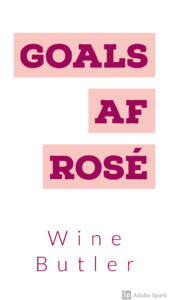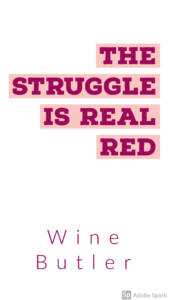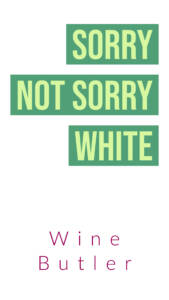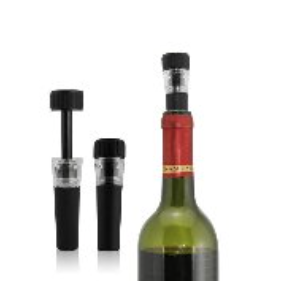
If you want to learn how to pick a wine at a restaurant, avoid wines by the glass, since these are often lower in quality than wine by the bottle. Photo Credit: Wikimedia CC user Iwona Erskine-Kellie
You would think that a wine enthusiast loves walking into a restaurant to find a wine list hundreds of pages long. In theory, more wine choices means a better chance that you’re going to find something exciting and mouthwatering. However, in practice, most of the wine lovers that I know hate coming across a massive restaurant wine list–there are simply too many bottles to choose from, and too little time to make your decision. When the pressure is on, I have a tendency to pick the same bottle of Pinot Noir that I’ve had dozens of times before, rather than trying to sort through a list of unfamiliar Rhône blends.
But when I finally learned how to pick wine at a restaurant, I stopped settling for the same “safe” wines. If you want to pick the best wine on the list every time, all you’ll need is a wine app and a few simple rules to follow.
How to Pick a Wine at a Restaurant by Sight
If you’re looking for a method for how to pick a wine at a restaurant with a minimum of stress, try following this series of basic steps:
Rule #1: Buy Yourself More Time
When you’re first presented with a wine list, whether it has 12 or 1,200 bottles on it, it’s a good idea to ask your waiter or sommelier for more time to look over the list. Ask your host to bring you a glass of cold water to start. The water won’t impact your palate, and it buys you some extra time to make your wine selection.
Rule #2: Eliminate Wines by the Glass
A sommelier once gave me great advice on how to pick a wine at a restaurant: avoid wine by the glass. In many cases, these wines are either cheap table wine, or bottles that the restaurant wants to sell off quickly because few people were interested in buying full bottles of it. In addition, you’ll get a better value, since wine by the bottle costs less per glass, on average, than individual glasses.
Rule #3: Decide on a Style
Think about the qualities that you want in your wine. Is your ideal bottle going to be full-bodied, medium, or light? Savory or jammy? Black fruit or red? You can either think of an ideal wine style before you set foot in the restaurant, and then order your meal based on the wine you choose, or you can pick your food first. If you order your food first, and your wine second, take a look at our guide to pairing your food with your wine. Your goal is to have, at minimum, an ideal body and about two or three tasting notes in mind as you look at the wine list.
Rule #4: Start at the Back of the List
Have you ever noticed that restaurants tend to put odd, one-off bottles or New World wines toward the back of the list? That’s because many restaurateurs assume that the majority of customers will want to drink something familiar and classic, like Bordeaux or Burgundy, and so they’ll position these wines at the very beginning. You can save yourself some time and stress by choosing one wine from the smaller group at the back of the list, then working your way toward the front. Even if you don’t make it all the way through the list in time, you’ll still have at least one wine in mind when it’s time to order, and it’s more likely to be an interesting one than if you’d started at the front.
Rule #5: Avoid Major Producers or “Typical” Wines
Although popular producers like Screaming Eagle and Latour are consistent in quality, it’s not always worth it to order these wines from a restaurant’s list. To start, restaurants mark up their prices significantly on popular bottles, and you won’t get the chance to discover something new. If you want to drink wine from the best producers, bring your own wine to the restaurant and pay the corkage fee instead. Use restaurant wine lists as a chance to try something quirky and unusual, rather than pedigreed.
Use Wine Apps to Finalize Your Choice
Once you’ve eliminated wines by the glass, picked a few ideal tasting notes, and gotten rid of any major producers or wines you’ve tried before, your wine list should now be much shorter. This is where a wine app can help you pick a wine at a restaurant. Apps like VinCellar have a search option with a database of thousands of wines, including critic scores and tasting notes. Obviously you won’t have time to search the app for every wine on the list, but if you’ve narrowed your search down to a handful of wines using the rules above, a wine app is a good way to pick one out of that group.
For instance, let’s say you’ve narrowed your wine list down to four Chardonnays. Using VinCellar’s search tool, you can look at average scores and eliminate the two lowest-scoring wines right off the bat. From here, you can look at tasting notes from your peers to see which remaining wine most closely matches your own preferences. What makes VinCellar a particularly great tool for narrowing down your search is that you can see the most recent tasting notes for a wine, not just professional scores that are years old. If the wine has already reached its peak, or it’s in an awkward phase, you’ll know to skip it based on what your peers are saying about it.
When in Doubt, Ask Your Sommelier
It’s a sommelier’s job to help you pick a wine at a restaurant, but they can’t help you if you’re not sure what you’re looking for. If, despite using these tricks, you’re still stuck for ideas or torn among several wines, you can show the sommelier which wines you were thinking of trying and let them help you from there. You can even show your sommelier your entries and wine collection in VinCellar. The app keeps a list of the wines in your collection, and displays which wines you’ve recently reviewed. Showing this to your sommelier lets her see at a glance which wine styles you seem to prefer, and what you thought of certain vintages, allowing her to pick a wine that’s absolutely perfect for you.
By: VinFolio Staff
***Grabbed from: http://blog.vinfolio.com/2017/07/27/pick-wine-restaurant-use-wine-apps-step-step-system/
Featured in Globe and Mail and Post City's 'Best of Toronto' list.
Toronto , Mississauga & Kitchener Locations To Serve You
-
-
- 14 bottles of wine crafted by you for $14 + HST. (over 2 visits - no experience necessary)
- $117.50 Value.
- EXPIRES. Limited Supply Available...
-
-
Intro Offer For First Time Clients. Full money back guarantee.
In a Nutshell
Staffers work with customers over two scheduled visits to ferment, bottle, and cork 14 bottles of craft wine During an initial short visit, assist in the yeasting process from your choice of wine. Wait 6–10 weeks and return to taste and bottle your custom vintage. The experience includes labels, foils, corkage fees, and enough wine to fill 14 bottles (an 11.5L carboy). Customers can either bring their own bottles or purchase them on-site for $1.35 each. HST not included. Choose FromGOALS AF Rosé
 SWEETNESS: To your taste
SWEETNESS: To your taste
OAK: None
BODY: Medium
Salmon colour with strawberry and raspberry flavours. A crisp acidity leads to a refreshing finish. Juicy watermelon and strawberries on the nose followed by citrus for balance. It’s not overwhelmingly complex — but that’s the point!
Food Pairing: Pink goes with almost everything! This wine has a hint of sweetness making it the perfect partner for spicier fare. It’s also a great match for seafood, chicken, and pork.
THE STRUGGLE IS REAL RED

SWEETNESS: Dry or to your taste
The warm Southern sun produces a smooth red with the varietal's signature nose: blackcurrants, dark chocolate and subtle toasty notes. Fermented with toasted oak produces a full-bodied wine with hints of coffee laced with vanilla notes. Food Pairing: A good match for beef, lamb and game, simply prepared.Sorry Not Sorry White
 SWEETNESS: Dry or to your taste
SWEETNESS: Dry or to your taste
OAK: None
BODY: Light-medium
Brilliant straw-yellow colour with a green tint. Fine, fruity (apples, peaches), forward varietal aromas. Pronounced, clean, elegant, and grapey flavour. Light to medium-bodied with a fresh mouth-watering finish. Bone dry and crisp!
Food Pairing: Pairs best with light, fresh flavours. Think summery dishes like salads, chicken and seafood, as well as light pasta dishes and risottos, and avoid heavy sauces in favour of creams and vinaigrettes.
RESERVE NOW

Act NOW and get your FREE vacuum bottle stopper. Great for saving opened bottles of wine!
-
-
-
-
The Fine Print
New clients/households only. Limit 1 per new client household. HST not included. Not available for gifting. Not valid with any other offers/promotions. Limit 1 per visit. Online reservation required. Must be 19 or older with valid ID. Must use promotional value in 1 visit. Valid for one type of wine only. Bottles not included. Extra $1.35 fee for each bottle, or bring your own clean bottles.Locations
Toronto Yorkdale Mall Area Get Directions 100 Bridgeland Avenue Toronto, Ontario M6A 1Z4 416-781-9463 Mississauga Get Directions 860 Lakeshore Road East Mississauga, Ontario L5E 1E1 416-781-9463 Kitchener Get Directions 232 Madison Avenue South Kitchener, Ontario N2M 3H4 226-241-9169 London Get Directions 1155 Sarnia Road London, Ontario N6H 5J9 519-471-5250
-
-
-

